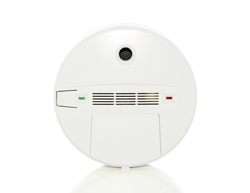Fall Safety Check — Carbon Monoxide Detectors
Savvy homeowners use the fall season to conduct critical safety checks throughout their homes. When you take on this project, include a check of your carbon monoxide detectors to ensure that they’re in good working condition, along with other steps such as clearing out gutters and assessing your air conditioner’s performance mid-season.
Homeowners who live in climates like South Florida’s can become lax about carbon monoxide (CO) detectors, as it can seem as if detectors are only necessary during those infrequent times when a gas furnace is in operation. However, a variety of other fuel-burning equipment may produce CO as a by-product of operations, including:
- Wood-burning stoves
- Gas fireplaces
- Gas water heaters
- Gas stoves
- Standby generators (oil, propane or gas)
- Vehicles that sit in attached garage
Without a detector, you’ll have no way of knowing when this colorless, odorless gas is present in your home. And while extremely minute amounts of it won’t immediately cause serious problems, over time even low concentrations of CO can cause major health problems, and, of course, high concentrations are potentially lethal. To ensure that you and your family remain safe from CO hazards, follow a two-step process when you conduct a safety check.
Testing
Test the detectors located throughout your home to ensure that their sensors will respond to the presence of CO. Follow the instructions in your owner’s manual, or simply press the “test” button on the face of the detector. In addition, it’s important that you change the batteries at least once a year, as the device will continue to draw power even if it never signals its alarm.
Locating
Beyond testing, to bring about optimal safety, make sure your carbon monoxide detectors are installed in the right locations to ensure safety. Effective placement is outside all sleeping areas and on every floor of your home. Avoid locating carbon monoxide detectors too close to gas-burning appliances to avoid the false alarms that may happen when harmless trace amounts of CO are emitted.
Use carbon monoxide detectors to help you and your family avoid an entirely avoidable yet dangerous CO hazard in your home. For more information, contact NisAir Air Conditioning & Heating today. We provide quality HVAC services to Martin, Palm Beach, St. Lucie and Indian River counties.

